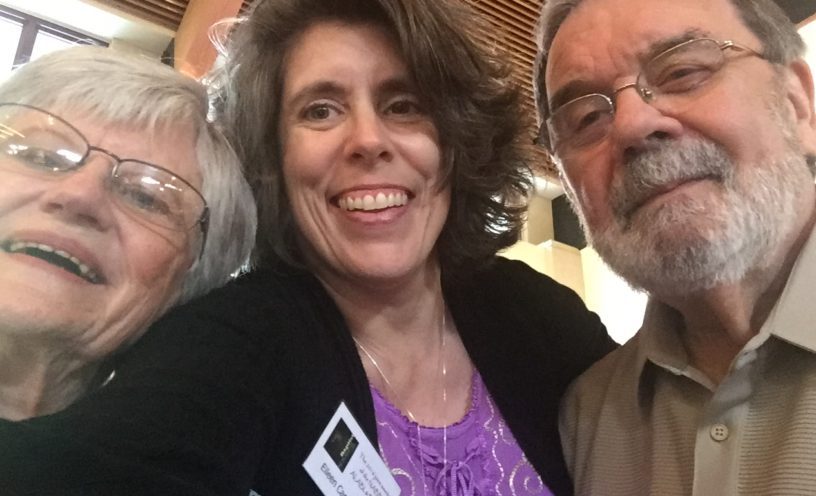Today at a shared meeting between the National Association of Baptist Professors of Religion and Baptist History & Heritage Society meeting in Waco, Texas, we will honor Carolyn Blevins with a festschrift, which is an academic book that honors the writing and contributions of a scholar and teacher. I’ve been keeping this celebration on the Q.T. for some time, and now it is time to share! What follows is a remembrance I wrote for Kay and Buddy Shurden who put together a short biographical sketch of Carolyn for the festschrift in the Spring 2016 Baptist History and Heritage Journal. My article to honor her in the journal is “Changing Hands: The Practice of Ordaining Baptist Women.”
My first class with Carolyn Blevins, Women in Church History, was also my first seminar style course in college. Instead of sitting in rows and hearing a professor lecture, we sat in a circle, and we talked with each other about what we had read. As students we were responsible for our learning in a whole new way.
In fact Carolyn taught me a lot about the significance of reading and thinking for myself. When we came to class we discussed historical documents about women and the church. We read primary sources in Elizabeth Clark and Herbert Richardson’s Women and Religion. Then we read about the experiences of Baptist women in Leon McBeth’s Women in Baptist Life.[1] I remember that we used note cards to write down summaries of what we read and to raise questions about each reading. These became very important building blocks for skills I would use throughout my life and my work as a researcher and professor. And I think it is fair to say that the first course I had with Carolyn set me on a path to deeper understanding of the fracturing of Baptist life, which we were living through while I was her student in the early 1980s. That became the topic of my dissertation and my first academic book, Anatomy of a Schism.
I was also a grader for Carolyn one semester. That experience was my first big realization that not every student tried so hard to make A’s. Sitting in her office on those quiet mornings marking quizzes, I remember soaking up the feeling of being a professor. One of my funniest memories is of a story she told me about a student response on a quiz. The question asked about the authorship of a New Testament epistle. The student’s answer was “this letter was written by neither Paul nor Pauline.” Good grief.
Throughout my time of studying and working with Carolyn I felt a sense of encouragement and support from her. My first invited visit back to Carson-Newman after I graduated was to meet with a group of students that Carolyn and others gathered in Support of Women in Ministry (SWIM). Perhaps that group is still be going? One of those very students, Andrew Smith, eventually became my colleague in graduate school, and he is now a professor of history at Carson-Newman. The multi-generational support that Carolyn provided literally nurtured hundreds and hundreds of students for vocations of teaching and ministry. I will always count her among the saints and cheerleaders for my own journey.
Carolyn attended the council for my ordination at my home church after I had graduated from seminary and finally received a call to serve a church. She participated in the service. And her name is one of only three women on my ordination certificate. Nearly any time I see Carolyn in the years since leaving Carson-Newman, we are able to pick right up and talk about life, ministry, scholarship, and Baptists. Whether it is laughter or lament when we see each other, and it is usually both, I always feel an easy connection with Carolyn. I’m so glad she has been and continues to be one of my most grounding and grace-filled teachers.
[1] Elizabeth Clark and Herbert Richardson, Women and Religion: A Feminist Sourcebook of Christian Thought (New York: Harper & Row, 1977). Leon McBeth, Women in Baptist Life (Nashville, TN: Broadman, 1979).




